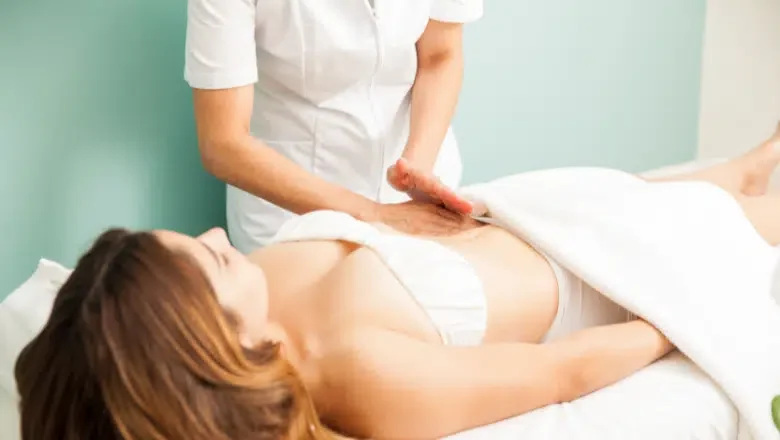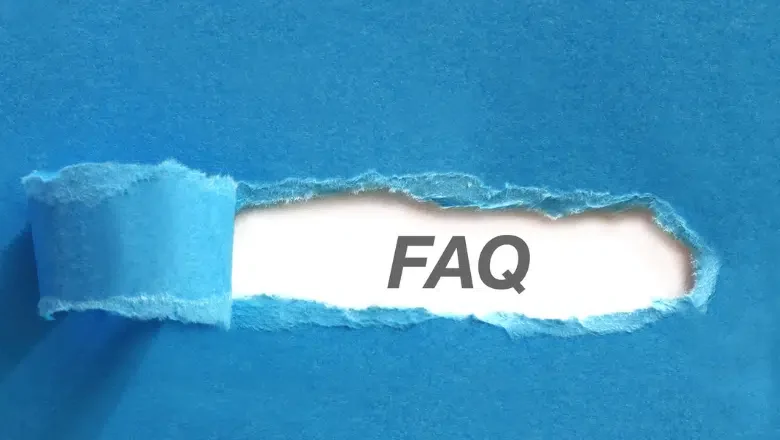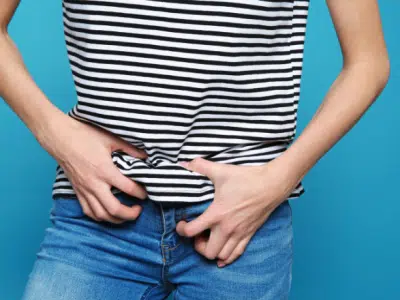Following a plastic surgery procedure such as a facelift, tummy tuck, or liposuction, your primary focus becomes swift recovery without any ensuing complications. It’s not just about getting back to your daily activities and work, but also about seeing the tangible results of your procedure with anticipation. While adequate rest and sleep are integral to your healing process, the benefits of a lymphatic massage should not be overlooked as it can significantly expedite your recuperation.
Centre for Surgery, located in central London, is a comprehensive hub for plastic and cosmetic surgery. Our clinic is equipped with cutting-edge technology to facilitate an array of face and body surgeries. Our experienced surgeons, well-versed in the latest surgical techniques, have catered to the needs of a multitude of patients in and around London, the UK. Our commitment to providing top-notch, personalised care sets us apart in the field.
How does Lymphatic Drainage Massage work?
Undergoing surgery is a significant event that has a multitude of effects on your body, often leading to subsequent surgical side effects such as discomfort, swelling, numbness, bruising, and pain. Therefore, adhering to post-surgery care instructions is vital for your recovery. One such therapeutic technique to alleviate swelling and the formation of scar tissue is lymphatic drainage massage.
Lymphatic massage, or manual lymphatic drainage, is a specialised form of massage that aids in the body’s detoxification process by facilitating the movement of lymph fluid, along with toxins and waste products. This technique redirects the lymph fluid to regions of your body rich in lymph nodes, such as the neck, armpits, stomach, and groin. These lymph nodes then perform their crucial role of filtering out the toxins and wastes before they are expelled from the body.
Lymphatic massage plays a key role in expediting the healing process following procedures like a tummy tuck, liposuction, or facelift by reducing inflammation, swelling, and the formation of scar tissue. It’s an effective tool in the journey towards a smoother recovery and enhanced surgical outcomes.
Benefits of Lymphatic Drainage Massage
Lymphatic drainage massage offers a range of benefits that significantly aid in the post-operative recovery process:
- It efficiently drains excess fluid accumulated near the lymph nodes, preventing undesirable complications like seromas.
- It considerably reduces bruising, accelerating the pace at which these visual markers of trauma fade.
- It alleviates pain, discomfort, and swelling, enhancing patient comfort during the healing phase.
- It expedites the overall healing process, aiding patients in returning to their daily routines more swiftly.
- It may enhance the appearance of scars by reducing their visibility, contributing to more aesthetically pleasing surgical outcomes.
- It may also help to diminish issues such as indentations, rippling, and hard lumps in the body, thus improving the overall results of the surgery.
Importance of Lymphatic Massage or MLD after cosmetic surgery
The importance of Manual Lymphatic Drainage (MLD), also known as lymphatic drainage massage, extends far beyond its role in post-surgical recovery. This technique is deeply intertwined with the overall well-being of your body due to its interaction with the lymphatic system.
RELATED: Lymphatic Drainage Massage After Liposuction
The lymphatic system is a pivotal part of the body’s defence mechanism. It consists of a network of vessels and nodes that continuously work to maintain health. Lymph, the fluid transported by this system, carries immune cells, proteins, hormones, toxins, and fatty acids. The lymph nodes process these substances.
When your body is stressed due to surgery, infection, or illness, the efficiency of the lymphatic system can decrease. This can result in an accumulation of lymph fluid, leading to inflammation and other health issues. MLD effectively addresses this by stimulating the flow of lymph, thus hastening the removal of toxins and other waste products from the body.
However, the benefits of MLD are not confined to its health impacts. It also holds significant aesthetic value. Regular lymphatic drainage massages can improve the quality and appearance of your skin, contributing to a youthful and radiant complexion. Furthermore, it can help alleviate the early morning facial puffiness that many people experience.
RELATED: Can Liposuction Treat Lymphoedema?
Choosing the right compression garment to enhance the results of lymphatic drainage massage
The relationship between lymphatic drainage massage and cosmetic surgery is vital, especially considering the inevitability of post-operative swelling. Such swelling is a natural part of the healing process as our bodies respond to the physical disruption caused by surgery. Certain procedures, such as liposuction and abdominoplasty (tummy tuck), can disrupt the natural pathways utilised by the lymphatic system for drainage. In these instances, lymphatic drainage massage can prove to be highly beneficial.
An important part of managing this post-operative swelling is the appropriate selection and usage of post-surgery compression garments. Surgeons recommend the use of these garments after surgery for good reason. These garments aid the lymphatic drainage process, helping to prevent the accumulation of lymph fluids in specific areas, which in turn reduces swelling and promotes faster healing.
Additionally, wearing these garments is an excellent preparatory measure for lymphatic drainage massage as they help condition your body for the massage process. It’s crucial to heed your surgeon’s advice when it comes to choosing and wearing these garments. They can provide recommendations based on their expertise and your specific surgical procedure, ensuring that you choose a garment that will aid your recovery and contribute positively to your overall post-operative care.
Preparing for the Lymphatic Drainage Massage
Preparing for a lymphatic drainage massage involves certain steps that are essential for achieving the best results and promoting effective detoxification. Here’s what you should do prior to the procedure:
- Maintain hydration: Aim to drink 8-10 glasses of water daily. Staying hydrated can enhance the effectiveness of the detoxification process facilitated by the massage.
- Avoid large meals: You should not consume a large meal immediately before the massage. This can help to avoid any potential discomfort and assist in the efficient movement of toxins.
- Wear suitable clothing: Opt for lightweight and loose-fitting clothing. This will ensure comfort during the procedure and grant the therapist easier access to the areas that require massage.
- Medication adjustments: Depending on the guidance provided by your surgeon, you may need to adjust the dosage of certain medications. This is particularly relevant for oral painkillers.
- Communicate with your surgeon: If you experience any unusual signs or symptoms prior to your massage, it’s vital that you inform your surgeon. They will then be able to determine whether it is safe and beneficial for you to proceed with the lymphatic massage.
Lymphatic Drainage Massage After-Care Instructions
Following a lymphatic drainage massage, it’s important to adhere to certain post-care instructions to maximise the benefits of the treatment. Here are the steps you should take:
- Stay Hydrated: Following your massage, you may experience increased thirst. Ensure you consume plenty of water to keep your body adequately hydrated.
- Rest and Relax: You might feel notably fatigued after the massage. If possible, arrange to take the day off and allow your body to rest and recuperate. This is a crucial part of the healing process.
- Maintain a Healthy Diet: It’s advisable to consume a variety of clean and nutritious foods following the massage. Limiting intake of processed food can also be beneficial to your overall well-being.
- Wear Compression Garments: Don’t forget to continue wearing your compression garments as directed by your surgeon. These are important for aiding the lymph drainage process and controlling swelling.
- Gentle Exercise: After a day of complete rest, incorporate gentle physical activity, like a leisurely walk, into your routine. This can aid in maintaining circulation and facilitating the lymphatic system’s function.
Lymphatic Massage FAQs – Frequently Asked Questions about Lymphatic Massage and Surgery
Does a lymphatic massage benefit post-surgery recovery?
A lymphatic massage, a gentle treatment involving the manipulation of the lymphatic system, offers several benefits in the aftermath of surgery. By mitigating inflammation, reducing swelling and aiding the breakdown of scar tissue, this form of massage can accelerate the healing process post-surgery. Additionally, it facilitates the elimination of toxins and waste products from the body, thereby fostering a healthier recovery.
How frequently should one undergo a lymphatic massage post-surgery?
In the aftermath of surgery, it is often suggested to avail a series of lymphatic drainage massages, with a recommended frequency of once every three months. This practice aids in minimising inflammation, swelling, and the formation of scar tissue.
What role does lymphatic massage play after plastic surgery?
Following a plastic surgery procedure, a lymphatic massage can be instrumental in accelerating recovery. This massage stimulates the lymph vessels to encourage the removal of fluid, toxins, and waste products. Consequently, the lymph fluid is redirected towards body parts with numerous lymph nodes such as the armpits, neck, stomach, and groin. Here, these waste products are filtered before being eliminated, thereby speeding up the recovery process.
How many lymphatic massages are required following a tummy tuck procedure?
After a tummy tuck procedure, it is generally advised to have 2-3 sessions of lymphatic massages. Following these sessions, your surgeon can assess your recovery and determine whether additional lymphatic massages are necessary.
What advantages does lymphatic drainage offer?
Lymphatic drainage comes with several benefits. It significantly reduces swelling, aids in the removal of toxins, fortifies the immune system, and facilitates quicker recovery.
What is the time span for lymphatic drainage to exhibit its effects?
Following a lymphatic drainage massage, the lymphatic flow rate can rise to approximately 100 to 120 beats per minute, which then gradually decreases over the next 48 hours.
What aids lymphatic drainage following surgery?
Post-operative lymphatic drainage can be significantly enhanced by wearing compression garments and through manual lymphatic drainage techniques.
Does lymphatic drainage massage genuinely offer benefits?
Yes, indeed. Lymphatic drainage massage works on the basis of our body’s intrinsic drainage system and thus can offer real benefits.
What is the sensation following a lymphatic drainage massage?
After a lymphatic drainage massage, you may feel a sense of fatigue. It’s advisable not to partake in any strenuous activities immediately after and to gradually return to your usual routine. Some individuals might also experience significant thirst following the massage.
Is it possible to fall ill after lymphatic drainage?
No, although you might feel fatigued after the massage, it should not induce sickness.
What signs indicate poor lymphatic drainage?
Significant signs of suboptimal lymphatic drainage include:
Swelling of the arms and legs Changes in the skin’s texture Alteration in skin colour Appearance of blisters Fluid leakage Who should refrain from receiving a lymphatic massage? Individuals suffering from acute inflammation, malignant tumours, thrombosis, and cardiac conditions should avoid lymphatic massage. Even in the absence of these conditions, it’s prudent to seek medical advice before proceeding.
How frequently should lymphatic drainage be performed?
The frequency of lymphatic drainage can vary greatly, depending on an individual’s unique requirements. It could range from as infrequently as once a month to as often as four times a week.
Can I conduct lymphatic drainage manually at home?
While it is technically possible to conduct lymphatic drainage at home, it is not advisable, particularly after surgical procedures. It’s best to consult with a professional for post-operative lymphatic drainage massage.
How should I prepare for a lymphatic drainage massage?
Here are six essential tips to prepare yourself for a lymphatic drainage massage:
- Ensure you choose a qualified therapist to carry out the lymph drainage massage.
- Plan a relaxed and calm day on the day of your massage.
- Avoid consuming large meals before the treatment.
- Do not apply lotion or oil before the treatment.
- Ensure you empty your bladder before the massage.
- Get plenty of rest and hydration.
Is lymphatic massage associated with pain?
Lymphatic massage should not be a painful procedure. It is a gentle, pain-free technique that should not induce any discomfort, even after surgical procedures.
Are lymphatic massages essential?
While not strictly necessary, lymphatic drainage massages are considered beneficial due to their role in reducing inflammation, swelling, and scar tissue formation. These massages support optimal functioning of both the circulatory and lymphatic systems.
What exactly is a post-operative lymphatic massage?
A post-operative lymphatic massage amalgamates various massage techniques specifically targeted towards your circulatory and lymphatic systems. These methods stimulate blood flow and expedite the elimination of toxins and other waste materials from your body. They are typically administered after cosmetic procedures such as facelifts, tummy tucks, or liposuction.
When is the ideal time to start a post-operative lymphatic massage?
Generally, lymphatic massage techniques are performed within the first six weeks following surgery. The sooner you can initiate lymphatic massage post-surgery, the better the outcome is likely to be. Typically, light lymphatic drainage massage techniques can commence 10-14 days post-surgery to alleviate swelling and hasten recovery. As time passes, stronger and more vigorous massage techniques may be introduced. However, due to discomfort linked to the surgery, some patients may need to wait until 3 weeks post-op to tolerate a lymphatic massage.
What are the potential consequences of forgoing a lymphatic massage after liposuction? If you decide not to undertake lymphatic massage after liposuction, you could potentially face issues including:
- Hardness at surgical sites
- Haematoma (accumulation of blood under the skin surface)
- Escalating pain
- Prolonged swelling
- Water retention
How can fluid be eliminated after liposuction?
The most effective method for eliminating fluid following liposuction is through lymphatic massage. This technique stimulates the lymph vessels, encouraging the movement of fluid, toxins, and waste products towards them for filtration. These waste materials are subsequently eliminated in the form of urine, substantially reducing the risk of oedema or swelling due to fluid build-up.
How can one perform a lymphatic massage after a facelift?
The manipulation of tissue during a facelift can result in side effects like soreness and tenderness. A lymphatic massage can soothe these symptoms through its gentle upward strokes on the face, reducing post-operative pain and promoting faster healing of facial tissues by increasing blood circulation. Furthermore, it can alleviate swelling by facilitating the drainage of lymph and fluid from the facial tissues. Here’s how to perform a lymphatic massage after a facelift:
- Begin by thoroughly washing your hands with soap and water to prevent the risk of infection.
- Commence at the collarbone or clavicle, utilising as much surface area of your hand as possible. Apply gentle pressure and complete large circles over the area 8-10 times.
- Spread your fingers into two groups and perform large circles on both sides of your ear and underneath it 8-10 times.
- Execute large circles on your jaw 8-10 times.
- Use short, gentle strokes from your ear down to your collarbone, repeating this 5 times or more.
- Execute short, gentle strokes underneath your jaw 5 times or more.
- Apply short, gentle strokes on your cheeks and beneath your eyes using both hands, working towards your ear area, 5 times or more.
- Perform short, gentle strokes on your forehead, starting from the middle and working towards your ears, 5 times or more.
- Initiate short, gentle strokes from your forehead all the way down to your collarbone area, repeating this 5 times or more.
Does a lymphatic massage constitute a deep massage?
Contrary to popular belief, a lymphatic massage is not a form of deep massage. It involves gentle manipulation of the circulatory and lymphatic systems, based on comprehensive scientific understanding of their structures and functions. A deep massage is usually not advised after a facelift, tummy tuck, or liposuction as it could result in further bruising or injury.
RELATED: How to Massage Yourself After Cosmetic Surgery
Can a lymphatic massage help reduce bruising?
Bruises result from an accumulation of cellular debris and old red blood cells in your tissues. A lymphatic massage encourages the movement of these waste materials to the lymph vessels for filtration and elimination. This can significantly reduce the appearance of bruises and shorten healing time.
Benefits of Lymphatic Drainage Massage at Centre for Surgery
Centre for Surgery is renowned for offering exceptional care in plastic and cosmetic surgery, and one of the key treatments we specialise in is lymphatic drainage massage. Our practitioners are highly skilled and experienced, ensuring that our patients receive the best possible care.
At Centre for Surgery, we understand the importance of a well-functioning lymphatic system for overall health and well-being. Our lymphatic drainage massage offers numerous benefits, including:
- Reduction of Swelling: Post-surgery, it’s common for patients to experience some level of swelling. Our lymphatic drainage massage helps in reducing this swelling, enhancing comfort and speeding up the healing process.
- Detoxification: This massage technique helps in flushing out toxins from the body, promoting overall health and well-being.
- Improved Immunity: The lymphatic system plays a vital role in the immune response. Regular lymphatic massages can boost immunity, helping the body to fight off illnesses more effectively.
- Faster Post-Surgery Recovery: Lymphatic drainage massage can significantly speed up recovery after surgery. By reducing inflammation and encouraging the body’s natural healing processes, patients often find they’re able to get back to their normal activities sooner.
- Enhanced Skin Quality: The detoxifying properties of lymphatic drainage massage can result in clearer, healthier-looking skin.
- Relief from Pain: By reducing pressure caused by swelling and improving circulation, lymphatic drainage massage can also alleviate post-surgery pain and discomfort.
At Centre for Surgery, we are committed to providing our patients with top-tier care, tailored to their specific needs. Our approachable and highly qualified team ensures that each patient receives personalized attention, making their experience as comfortable as possible. We believe that this, along with our commitment to using the latest evidence-based techniques, sets us apart and allows us to deliver the high-quality care our patients deserve.











